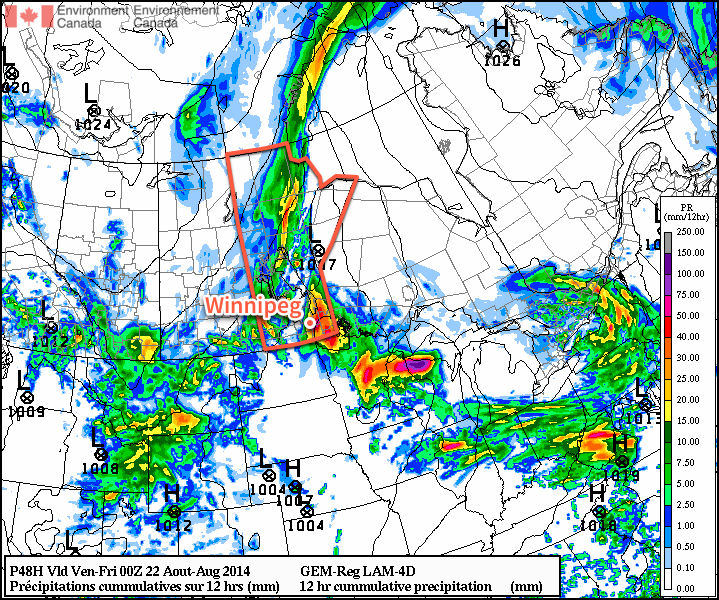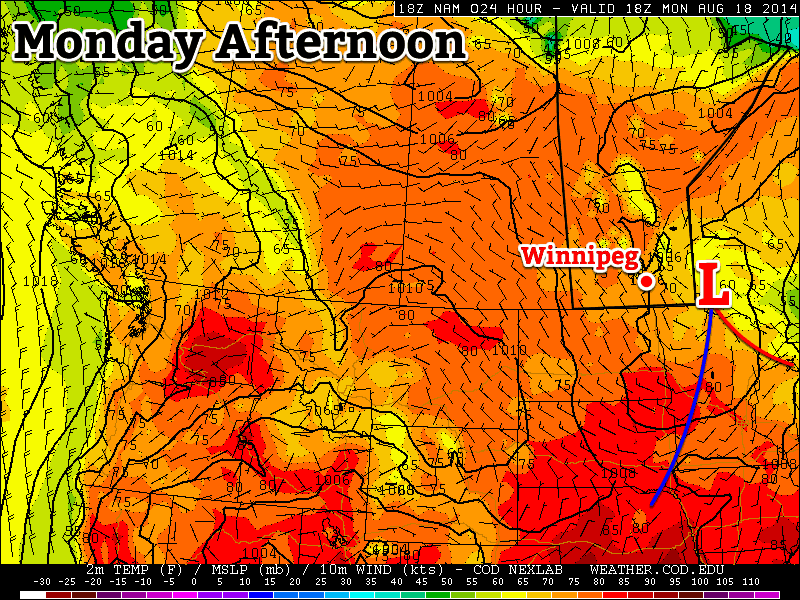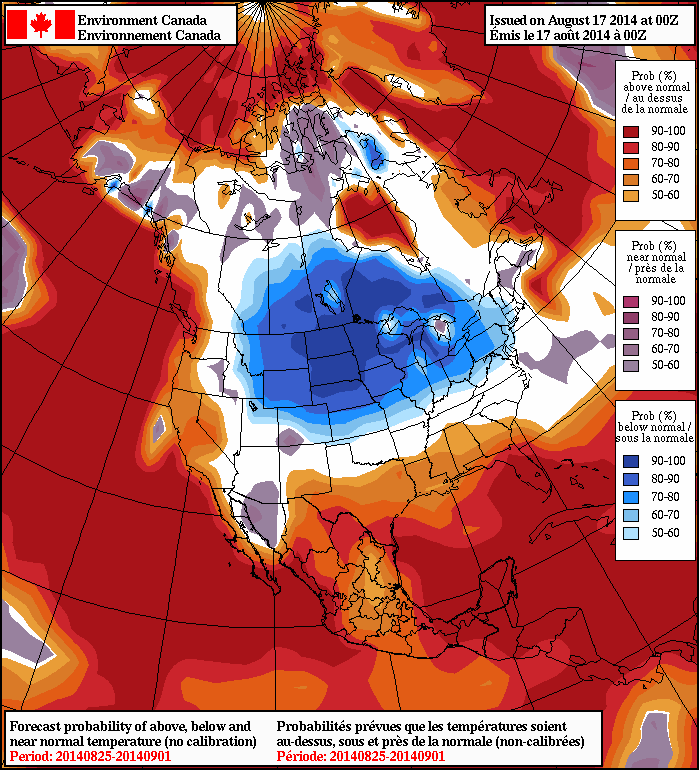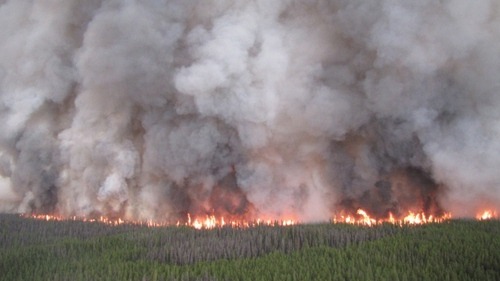A big change in the weather is on the way as a major low pressure system moving across Manitoba through the second half of the week shifts the province into an unsettled and significantly cooler pattern.
Today will be another gorgeous, warm day with plenty of sunshine and highs in the upper 20’s, perhaps even reaching the 30°C mark. With the developing low pressure system still to our west in Saskatchewan, a broad southerly flow will continue to draw heat northward and trap moisture near the surface. The result will be a fairly humid day that ends up feeling closer to the mid-to-high 30’s instead of “just” the high 20’s. It will also be one of the breezier days in a while with winds picking up to around 30km/h this afternoon. Some cloud cover will likely begin working its way into the Red River Valley through the afternoon or early evening as the incoming low pressure system tracks eastwards.
Some showers or thunderstorms will develop through southeastern Saskatchewan and North Dakota and lift northeastwards through the night. Whether or not they move into the Red River Valley is another question altogether. The entire system is moving a little slow and there is uncertainty as to whether the showers will be extensive or tied closely to the surface low. That said, I think that there’s a chance for showers or thunderstorms in Winnipeg through the second half of the overnight period.
Thursday: Likely Wet
Tomorrow will likely start off with some rainy weather in Winnipeg as some rain or thunderstorms move through the city. The potential for a fair amount of rain exists, with models forecasting anywhere from almost nothing to nearly 50mm of rain. While nothing is entirely possible – models can handle precipitation that develops during the night-time in summer poorly – so is the other extreme; with precipitable water values forecast to reach nearly 2 inches (50mm), that same amount of rain is possible if the convective system happens to be a slow-moving one. What happens will depend highly on what develops tonight, so we’ll be keeping a close eye on it.

The rain will push off to the northeast through the morning and leave us with mixed skies and a chance of some shower activity redeveloping in the afternoon. Winds will be fairly light as the temperature climbs to around 24°C.
Thursday night will be fairly cloudy with a chance of the odd shower as the temperature drops to around 16°C.
Friday: Continued Cooling
Friday will offer a brief reprieve from the unsettled weather with mixed skies gradually becoming more cloudy as the day wears on and a high near 23°C with a northeasterly wind. There will be a slight chance of some scattered afternoon showers, but their impact looks to be minimal if they develop.
Friday night will see temperatures dropping to around 13°C with a decent chance at seeing more shower or thunderstorm activity developing over the Red River Valley as another impulse begins lifting northwards out of North Dakota into Manitoba.
Big Cool-Down in Store for Southern Manitoba
We’re in store for much cooler weather over beginning this weekend persisting through next week as a large upper-level cold trough develops over the Prairies as another system pushes through Manitoba bringing a renewed chance for rain.

This upper-level cold trough will shunt the jet stream further south and allow much cooler air to spill southwards out of the Arctic. This will drop our daytime highs into the teens and provide some distinctly fall-like weather. There’s some uncertainty to how cold it will get, but it seems fairly safe to say that daytime highs in the mid-teens are likely. Overnight lows won’t be too horrendous, generally dropping into the 5–8°C range.




